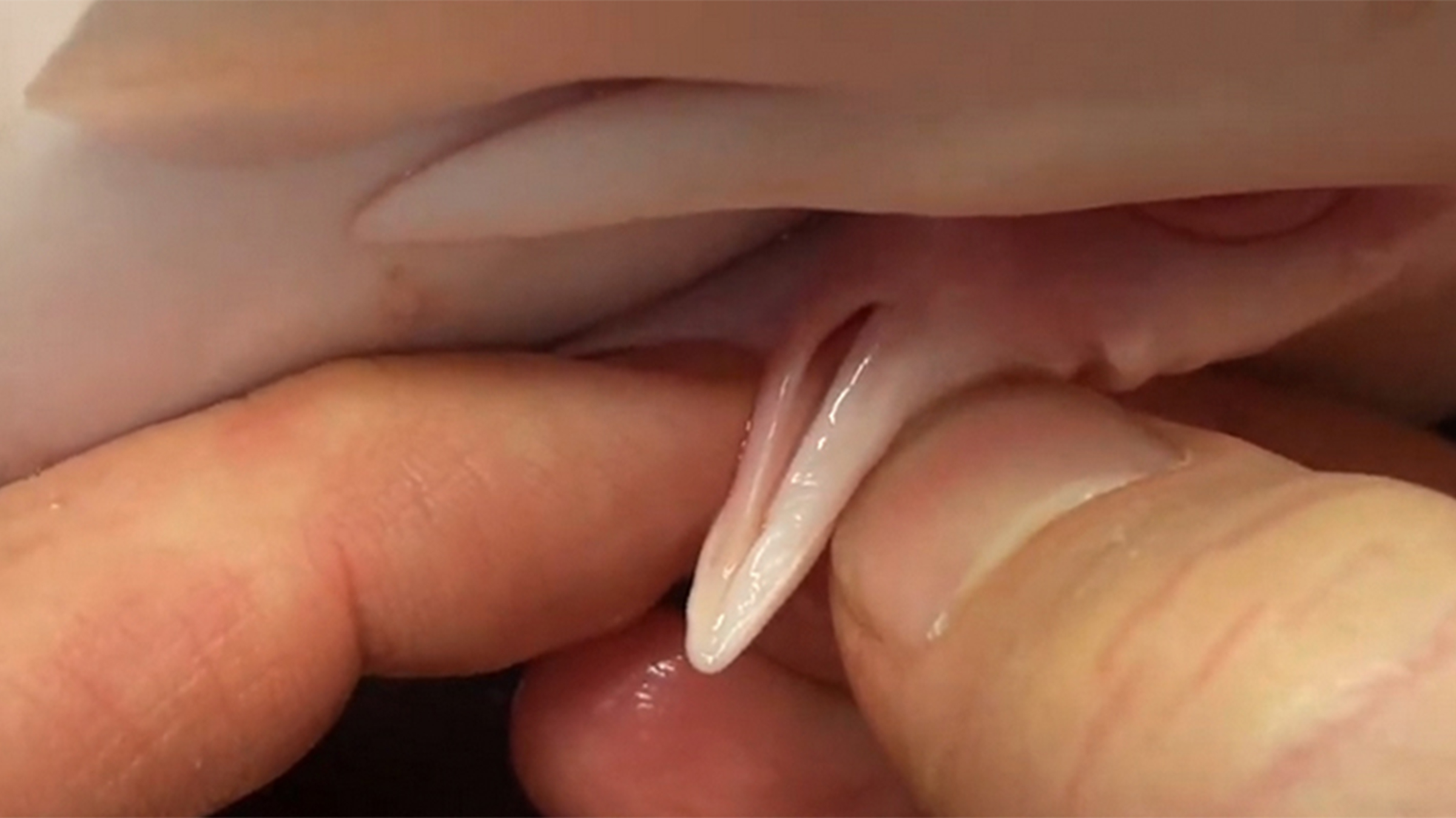
The Ichthyology Collection recently received a juvenile Bull Shark (Carcharhinus leucas) found dead on the beach at Indian Point (Corpus Christi Bay), near Corpus Christi, Texas, by one of our frequent specimen donors (posted on iNaturalist). It likely was caught by an angler and left out to die. Apparently, there are still people that believe the only good shark is a dead shark. This sort of salvage of dead animals, killed by vehicle traffic or other causes, has become a major source for museum specimens over the years.
In Austin, we promptly prepared the specimen for long-term storage in the collection. This means determining a positive species identification, taking tissues to be deposited in our Genetic Resources Collection, labeling, databasing, and injecting the specimen with formalin. This specimen is approximately 3 feet long and will go into one of our large specimen tanks.
Our collection has a freshwater focus, but it’s always exciting getting marine species we don’t see very often. But, the fact is that this species often enters freshwater and, unlike most sharks, is known to go far inland up rivers and streams. A simple Google YouTube search results in thousands of videos of people observing and catching them in rivers around the world. The species’ specialized kidneys and other organs enable it to cope with shifting osmotic pressures. Moving between marine and freshwaters would kill most fishes, but Bull Sharks are euryhaline, moving easily between the ocean and rivers, and they can survive for long periods in freshwater. Six adult Bull Sharks were observed to survive in an Australian golf course pond for 17 years until they were able to make it back to saltwater during a flood that reconnected the pond to the nearby river. Compared to adults, their young are more frequently found in coastal freshwater areas, in lower salinities that larger predatory sharks do not tolerate. This seems to be an effective strategy, increasing the survival rates of their young.

Bull Sharks are not the only sharks entering Texas’ freshwaters. In his thesis documenting fish occurrences from the Lower Colorado River, supervised by Clark Hubbs, Tilton reported the collection of a Finetooth Shark (Carcharhinus isodon) in Austin in 1951. This was before the construction of Longhorn Dam, which now blocks this species and many other euryhaline species that might have come up rivers as far or further than Austin.
Bull Shark adults can become quite massive, weighing in from 200-500 pounds. Males can grow to seven feet in length, and females outsize them significantly at 11 feet in length. They are mainly solitary, but do come together when it is time to mate. In warm climates, these animals breed year round. In colder climates, Bull Sharks give birth during spring and summer.
The fact that the coastal and freshwater habitats where these euryhaline sharks live are both frequented by humans results sometimes in negative interactions. Along the coast, euryhaline sharks are subjected to human caused habitat degradation, pollution, and angling. However, shark attacks are very rare. Humans are indeed more of a threat to Bull Sharks (and most other) sharks than they are to humans. On average, globally less than 20 people die each year of shark attacks while 20 million sharks on average die because of the fishing industry. Sharks are caught to be used as fish meal or sold for human consumption. Fins are used in some Asian countries for shark fin soup and the skin is frequently used for leather.
Because of their proximity to human populations, Bull Sharks inspire the imagination. In 1916, Bull Sharks were blamed for a series of attacks that occurred in New Jersey that inspired Peter Benchley’s book Jaws. If that title is familiar, this is indeed the book which Steven Spielberg turned into a blockbuster movie in 1975, although he used a Great White Shark instead. This film has as of 2023 grossed a whopping $87 million dollars, a number as big and impressive as the Bull Sharks themselves.

Notice the small black dots on the shark’s snout, which are gel-filled pits, called ampullae of Lorenzini. They are used in sensing the electric field of its prey. Notice the gel being exuded from the pits.

This groove in front of the caudal fin is called the precaudal pit. It and the free rear tip to the dorsal fin, also shown here, likely improve swimming efficiency.

The presence of claspers indicates that this specimen is a young male. Close up of one of the claspers, which are used in mating, shows the groove that sperm can travel down into the female’s cloaca.



